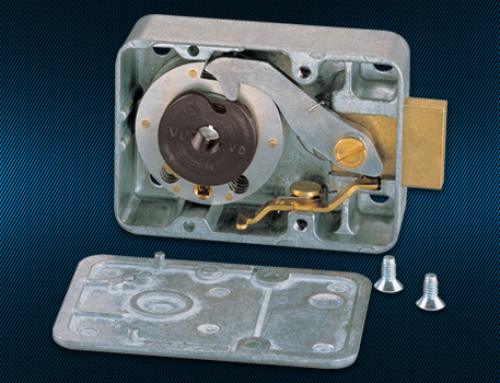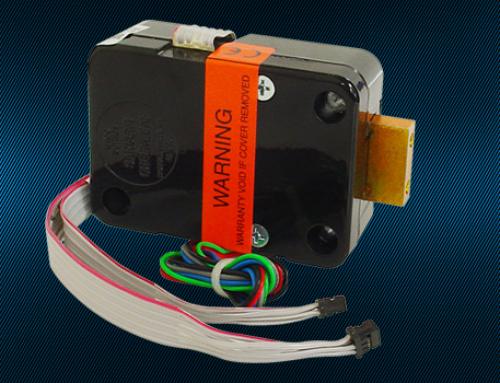Why Won’t My Safe Open
Depending on the make, model, and type of lock used, there are a number of different reasons for why your safe won’t open. In most cases, but not all, the opening and repairing of your safe will require hiring a certified safe technician or reputable locksmith with safe-work experience. Below I discuss, in no particular order, the ten most common reasons for safe lockouts when the lock being used is a mechanical one, and different opening strategies for each.
1. Combination Change Mishap
Modern dial rings have two index marks. One at the 12-o’clock position called the “opening index” and one at the 11-o’clock position called the “change index”. If the opening index is used for any of the three (or four) numbers during a combination change the new combination will be off by the number span between the index marks, and therefore will not open the safe when dialled in.
2. Loose Dial Ring
When dialling in a combination the opening index is used. If this index mark shifts – by even the smallest amount – from its 12-o’clock position, the combination will not open the safe. If, for instance, the dial ring has shifted to the left by two numbers and the combination is 20-40-60, you will now have to dial in the combination 22-42-62 to open the safe. And if it has been shifted to the right by two numbers, you will have to dial in the combination 18-38-58 to open it.
3. Wheel Slippage
Improper usage of a lock like heavy handed twisting when retracting the lock bolt, severe dial spinning when dialling in a combination, and forcing the lock bolt to extend before the bolt-work is fully thrown, can all lead to wheel slippage. Though less common, wheel slippage can also be caused by frozen flies and by setting the third number in the forbidden zone. Wheel slippage is generally occurs on the wheel closest to the drive cam, and is overcome by adding to the last number in the combination by increments of one and oscillating the dial between the contact points each time this is done.
4. Bolt End Pressure
Bolt end pressure happens when the carriage is forced against the lock bolt. This is usually caused by either miss-aligned bolt work, an incorrectly installed lock, or a door that has fallen out of alignment.
5. Loose Mounting Bolts
Lock mounting bolts that have not been installed with Loctite loosen overtime and eventually fall into the wheel pack or cause an external relocker to fire. When either the former or latter results in a lockout, usually the only option available to open the safe is to drill it.
6. Stuck Lever
The lever is designed to pivot on a lever screw or post. Overtime, through a lack of proper servicing, this pivot point can become gummed up. When this happens either the nose of the lever does not drop into the gate of the drive cam or takes a very long time to do so. If it does not drop, the safe may need to be drilled. If it takes a long time to drop, the safe can be opened by dialling in the combination, returning the dial to the drop in point, and rapping on the door with a dead blow hammer.
7. Dial End Play
If there is excessive in-out travel of the dial, the drive cam can not transfer motion to the wheel pack and dialling in the combination therefore, will not open the safe. This problem is magnified in floors safes where the drive cam is more easily able to drop away from the tumblers. This problem is overcome by pulling out (or up) on the dial while dialling in the combination; this will bring the drive came back into contact with the wheel pack and the safe should then open.
8. Internal Relocker Fired
When an internal relocker (or trigger) fires, you can dial in the combination and the lever will drop, but the lock bolt will not retract. During normal operation (depending on the type of lock used) the dial will travel between 10 and 17 numbers from lever drop to bolt retraction. When an internal relocked fires however, the dial will only travel between 1 and 3 numbers from drop in. There are only two causes for an internal relocker firing: (1) a loose lock case, or (2) a melted thermal relock button. When either the former or latter happens, typically the safe must be drilled.
9. Loose Spline Key
Loose spline keys are arguably the single most common reason for safe lockouts. The spline key is designed to fit snuggly into the drive cam and spindle; when it does not however, the numbers in a combination are thrown off when dialled in. When dialling left (i.e. counter clockwise) to 50, for example, the drive cam and wheel pack have not caught up and have stopped at 3-5 numbers below 50. When dialling right (i.e clockwise) to 50, on the other hand, the drive cam and wheel pack trail the dial and have stopped at 3-5 numbers above 50. To overcome this problem, you must add to left turns, and subtract from right turns.
10. Broken Drive Pin or Stuck Fly
On occasion drive pins and flies stick or break. When they break wheel counting becomes either limited or impossible, and usually there is little that can be done to avoid drilling the safe. When flies stick however, which is much more common, wheel pick up is felt in a staggered fashion. For tips on how to overcome this problem, please see Sargent and Greenleaf’s Mechanical Safe Lock Guide.
Though most safe lockouts require assembling a number of different, specialized tools, and deciding on an affective, efficient opening procedure, determining the correct reason or reasons for the lockout is more than half the battle. It is my hope that the above will help the reader on his or her way to making this determination.









